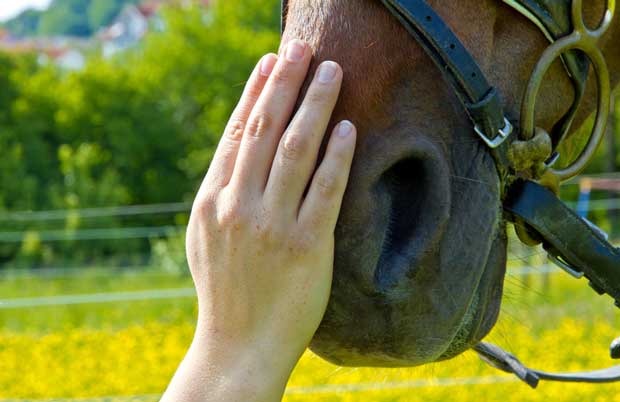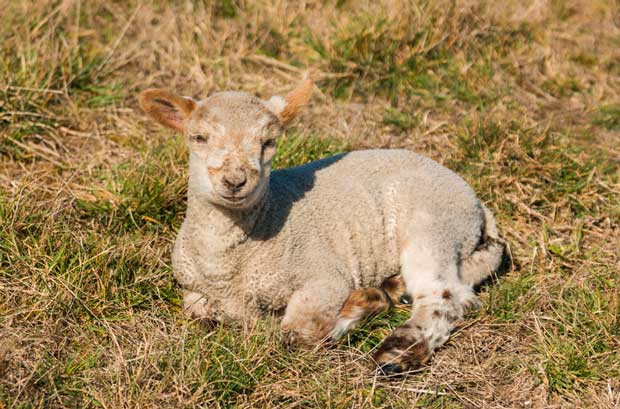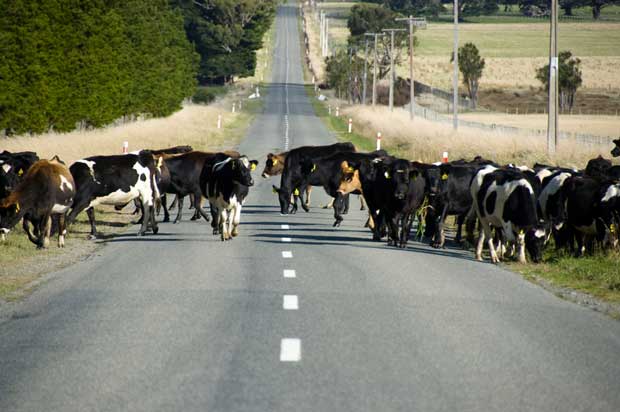How to look after animals in an emergency

How to keep animals calm after a disaster and how to plan for animal evacuation.
Words: Nadene Hall
In a disaster, animals will be upset, confused and agitated. Proven techniques recommended by the livestock management team at Colorado University include:
– Handle livestock quietly, calmly and in a manner they are familiar.
– Wear clothing and use vehicles that are familiar to them.
– If possible, keep or reunite familiar animal groups with each other.
– As soon as possible, place them in familiar settings or one which is quiet, calm and insulated from additional stimuli.
– Soft music and familiar sounds may help calm livestock.
– If possible, clean the animals (i.e., wipe out their eyes, mouths, and nostrils).
– If possible, move animals away from the residue of the disaster.
– Treat wounds of injured animals so their comfort level improves.
– Don’t leave halters or headstalls on animals in holding pens or when released. They can catch the tack on trees, equipment and other obstructions.
– Don’t tie animals together when releasing them. The connection creates a hazard for the animals and people trying to recapture them.
– Try to avoid releasing animals unless absolutely necessary to protect your safety, as they may run accidentally towards other risks.
– Report the location, identification, and disposition of your livestock to authorities handling the disaster, especially if your animals are aggressive or nervous by nature.

In the aftermath of a disaster and/or evacuation, livestock will tend to be calmer if they are able to be returned to familiar surroundings. However, one common problem is they may be picky about their feed and water, especially if they have been evacuated to an area with different-tasting feed options and water.
ANIMAL EMERGENCY KIT OPTIONS
Keep a special animal-only emergency kit just inside the door to your barn or in the garage. Use a plastic rubbish bin with a lid and don’t be tempted to raid it for daily use; resupply it so new medications/batteries go into the kit and almost expired ones get used up.
The Australian Horse Council recommends an animal emergency kit contains at least:
– wire cutters
– a sharp knife (or two)
– torches/headlamps + batteries
– portable radio + batteries
– water buckets
– extra lead ropes and head collars
– woollen blankets and towels
– a special animal first aid kit (see below0
A list of all your animals, breed, identification tags, location, vaccination status, quirks and any medicinal needs on a chart – you may not be the one who has to rescue or care for your stock. Tell your neighbours where to find this list, and have it in several locations if possible. If they can’t get hold of you, they may need to make vital decisions in your absence, so give them as much information as you can.
Depending on the disaster, water may be undrinkable for you and your livestock so have a supply of water sanitation tablets/liquids from camping stores.
HOW TO PREPARE AN ANIMAL FIRST AID KIT
If you are unable to get veterinary help, this kit may be all the help you get. It should be in a clean, waterproof container and contain:
– Torch/headlamp
– Rubber gloves
– Blankets
– Stethoscope
– Thermometer
– Tweezers
– Scissors
– Betadine
– Antibiotic spray
– Bandages
Recommended options include non-adhering melolin dressings in different sizes, soffban bandages (10cm wide), cotton wool rolls, elastoplast strapping, vetrap bandage roll, leg wraps
– Nappies & duct tape (excellent emergency bandage option)
– Bottles of sterile saline solution or plain table salt, 1 teaspoon to 600ml warm sterilised (previously boiled) water
– Hoof pick, knife, rasp
Other options: fly spray, Vaseline, fluro paint, bandanas (blindfolds), twitch
PLANNING AN ANIMAL EVACUATION

Questions to consider:
When to go? Research shows the earlier, the better to avoid potential traffic issues.
What will be the trigger point for the decision to evacuate? It is better to go unnecessarily than to leave it too late. Will the trigger point be, for example, rainfall warnings, river height, the proximity of fire etc.
What resources are at your disposal? Trucks, trailers, help from neighbours? Have a list with contact numbers of everyone within a 100km radius who could help or need help, and check who is willing to help in an emergency. Create agreements with your neighbours as to how you could help each other in case of an emergency. Talk with them about evacuation plans and how you could help each other.
Will your livestock load onto whatever rescue vehicles are available? If livestock has never travelled by float, they may balk when it is time to load them.
Where would you go? Who could temporarily house you and your livestock and what feed/pasture would be available? Have you got halters, lead ropes and temporary fencing you can take with you?
DIFFICULTIES IN EVACUATING ANIMALS
Animals pick up on stress, so be aware of:
Animals reacting differently. Frightened livestock, even very tame ones, can become very resistant to moving, or going in the desired direction when their nervous system is under stress. Your safety and that of your family need to take priority if livestock is uncooperative. Practice loading tame livestock on trailers, floats or trucks, even if you never take them anywhere – practicing during a disaster isn’t a good strategy. Use a separate cage for small pets like cats and dogs. Even pets that normally get on well may become aggressive when distressed.
Transportation difficulties. Consider that in the case of floods or fire there may also be road closures.
Equipment/facility design risk. Transportation equipment will face severe stress if the animals are agitated. Watch for sharp edges and holes.
Owners losing focus. Try to stay aware of the bigger picture even though a task such as moving large numbers of livestock will require concentration. Be aware of any dangers arising.
Teamwork is often required to execute a good evacuation and rescue plan, someone needs to be alert for oncoming hazards.
Love this story? Subscribe now!
 This article first appeared in NZ Lifestyle Block Magazine.
This article first appeared in NZ Lifestyle Block Magazine.
